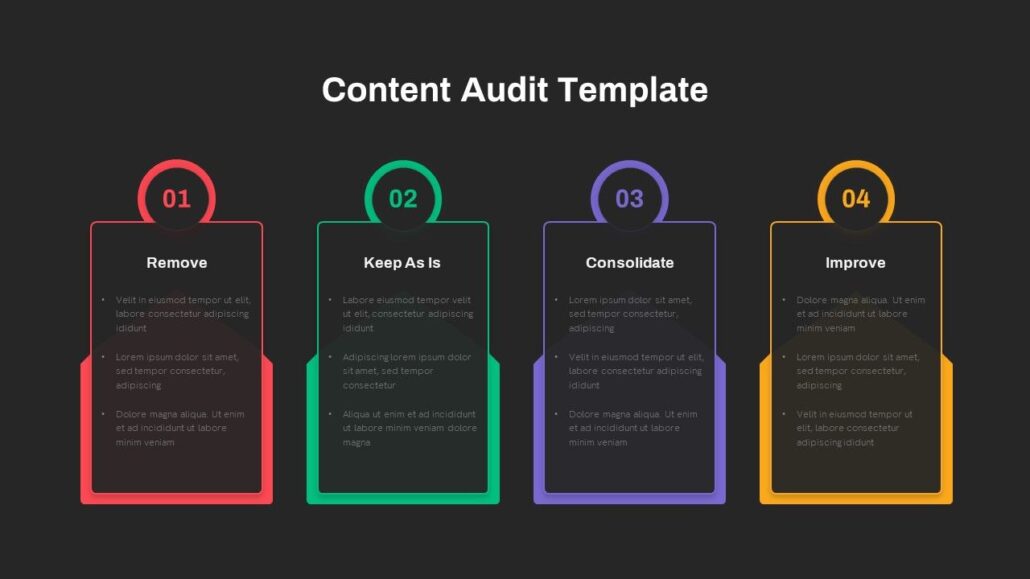In the digital age, User-Generated Content (UGC) has become a powerful tool for businesses to engage with their audiences and build brand loyalty. From customer reviews and social media posts to blog comments and forum discussions, UGC provides valuable insights and authentic interactions.
Explore UGC Best Practices in Content Auditing, a comprehensive guide outlining strategies and techniques to effectively review and optimize user-generated content for online platforms.
Understanding User-Generated Content (UGC)
UGC Best Practices in Content Auditing, User-generated Content refers to any content, such as text, images, videos, or reviews, created by consumers rather than brands. It plays a pivotal role in shaping public perception and influencing purchasing decisions. UGC ranges from product reviews on e-commerce websites to user-contributed articles on community forums.
The Importance of Content Auditing
Content auditing involves systematically reviewing and evaluating UGC to ensure it aligns with your brand’s values and standards. Here’s why it’s crucial:
- Maintaining Brand Image: Auditing helps preserve your brand’s reputation by filtering out inappropriate or misleading Content.
- Compliance: Ensures UGC adheres to legal and regulatory guidelines, safeguarding your brand from potential legal issues.
- Enhancing User Experience: High-quality UGC enhances user experience, increasing engagement and trust.
Setting Clear UGC Guidelines
The foundation of effective content auditing lies in clear UGC guidelines. These guidelines should be readily accessible to users, outlining the dos and don’ts of content creation. Ensure that these guidelines are prominently displayed on your website or platform.
Implementing Moderation Tools
Leverage technology to streamline the auditing process. Moderation tools, such as automated filters and keyword monitoring, can help identify and flag content that violates your guidelines. However, human moderators should also play a role in assessing nuanced situations.
Consistency in Auditing

Consistency is key in content auditing. To illustrate, establish a regular schedule for reviewing UGC, and furthermore, ensure that all content is evaluated against the same set of criteria. This commitment to consistency fosters transparency and, consequently, fairness.
Encouraging Authenticity
Encourage users to create authentic and meaningful Content. Authenticity not only builds trust but also enriches the user experience. Encourage genuine feedback and discourage fake reviews or comments.
Handling Negative UGC
Negative UGC is inevitable. Address it promptly and professionally. Engage with users constructively, seeking solutions rather than confrontation. Turning negative feedback into an opportunity for improvement can impress your audience.
Leveraging Positive UGC
Highlight positive UGC to amplify its impact. Showcase user reviews and testimonials on your website. Sharing real success stories can influence potential customers positively.
Measuring UGC Impact
Use analytics tools to measure the impact of UGC on your brand. Track metrics such as engagement, conversions, and customer sentiment. This data helps refine your UGC strategy.
Legal Considerations
Be aware of copyright and intellectual property laws when using UGC. Always seek permission from content creators when repurposing their work. Protect your brand from legal troubles by respecting these rights.
User Data Protection
Ensure that user data is handled responsibly and complies with data protection regulations. Transparency regarding data usage builds trust with your audience.
Staying Updated
Digital landscapes evolve, and so should your content auditing practices. Stay informed about emerging trends and challenges in UGC to adapt and stay relevant.
Collaborating with Content Creators
Collaborate with influential content creators and advocates within your community. Their support can enhance your brand’s credibility and reach.
Building Community Trust
Building trust with your audience is an ongoing process. Consistent content auditing and responsive engagement are essential in building a loyal community.
Display/User experience
Is your Content recent, conveniently accessible, and visually appealing? It ought to be. Nearly 80% of consumers claim that product reviews have the greatest impact on their choice to buy.
Content Collection
Do you actively encourage your customers to contribute their opinions and images by asking them to do so? By utilizing the most effective channels (such as post-interaction emails) and providing incentives as required, you can optimize the Content you collect.
Content amplification
Does your user-generated Content (UGC) merely exist on your website, or are you making the most of it through syndication and other ad channels? Give your Content a job to do.
Consumer insights
Are the themes evident in customer evaluations and feedback? How are you handling it? Let your business benefit from your insights.
Reputation management
Do you understand how to gain your customers’ trust? Positive reviews are important, but engaging with unfavorable reviews is important; avoiding bogus reviews and providing transparency is important.
Value measurement
Do you understand how UGC adds value outside of your product pages? Start estimating offline impact, amplification, and syndication.
Content Audit Template

This content audit template is designed to help you organize and streamline the process of evaluating your website’s Content. A well-executed content audit can improve user engagement, SEO rankings, and a more effective content strategy.
Why is a Content Audit Useful
A content audit is a valuable practice for several reasons:
- It helps identify outdated or irrelevant Content that can be updated or removed.
- SEO improves by identifying content gaps and keyword optimization opportunities.
- It enhances the user experience by ensuring Content aligns with audience needs.
- Content supports strategy by informing future content creation and distribution.
- It aids in compliance and risk management, especially when dealing with user-generated Content.
Content Audit Checklist:
- Content Inventory
- SEO Optimization
- Content Quality
- User Engagement
- Content Performance Metrics
- Content Goals Alignment
- Competitor Analysis
- Content Archiving and Removal
- Content Strategy Recommendations
- Documentation and Reporting
Content Audit Tools
Various tools can aid in the content audit process, including:
- Content management systems (CMS)
- SEO tools (e.g., Moz, SEMrush)
- Analytics platforms (e.g., Google Analytics)
- Spreadsheets (e.g., Microsoft Excel, Google Sheets)
- Content auditing software (e.g., Screaming Frog)
Website Content Audit Template Excel
An Excel template designed for organizing and tracking content audit data. It includes columns for content titles, URLs, metadata, audit status, recommendations, etc.
User-Generated Content Governance
This section discusses the governance framework and policies for managing and moderating user-generated Content on your platform. It covers content guidelines, legal compliance, moderation procedures, and community standards.
UGC Content Moderation Best Practices
Offers best practices for maintaining the quality and safety of user-generated content. Additionally, it covers manual and automated moderation, flagging systems, and handling inappropriate content.
Effective Content Audit Strategies for UGC
To audit user-generated content effectively, strategies tailored specifically to this task should be employed. Moreover, it is crucial to consider factors such as authenticity, community engagement, and trustworthiness.
UGC Review and Approval Processes
Defines the processes for reviewing, approving, and publishing user-generated content. Additionally, it outlines workflows, roles, and responsibilities.
Content Auditing for User-Generated Posts
In order to audit and manage user-generated posts effectively, it is essential to consider steps and strategies for ensuring they align with your platform’s standards and goals.
Ensuring Compliance in UGC Auditing
Guidelines for maintaining legal and regulatory compliance while auditing and moderating user-generated Content. This includes privacy, copyright, and content removal processes.
UGC Quality Assurance Tips
To ensure the quality and credibility of user-generated content, it is essential to implement validation, verification, and fact-checking processes. Therefore, here are some tips for achieving these goals.
Conclusion
UGC Best Practices in Content Auditing, Incorporating UGC best practices in content auditing is essential for any business looking to thrive in the digital era. Moreover, by setting clear guidelines, leveraging technology, and maintaining consistency, you can effectively manage and harness the power of user-generated content.
Additionally, remember that authenticity and transparency are the cornerstones of a successful UGC strategy.
FAQ:
What is User-Generated Content (UGC)?
User-generated content is any content created by consumers rather than brands. It includes reviews, comments, images, and more.
Why is Content Auditing Important?
Content auditing not only helps maintain brand image but also ensures compliance and enhances the user experience.
How Can I Encourage Authenticity in UGC?
Encourage users to provide genuine feedback, while also discouraging fake content.
What are Some Legal Considerations When Using UGC?
Respect copyright and intellectual property rights, and handle user data responsibly.
Why Should I Collaborate With Content Creators?
Collaborating with influencers can enhance your brand’s credibility and reach.
How do I Make Good UGC Content?
-
- Engage your audience.
- Encourage user contributions.
- Maintain quality standards.
What is UGC-Style Content?
-
- User-Generated Content.
- Created by customers or fans.
- Authentic and diverse.
What Should a Content Audit Include?
-
- Evaluation of existing Content.
- SEO analysis.
- Content performance metrics.
What is The Content Audit Methodology?
-
- Gather content inventory.
- Analyze content quality.
- Identify gaps and improvements.




Hey! Someone in my Myspace group shared this site with us so I came to take a look. I’m definitely enjoying the information. I’m book-marking and will be tweeting this to my followers! Fantastic blog and wonderful design.